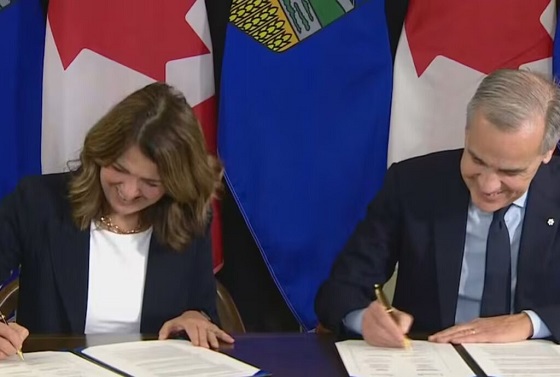Opinion
Bill Maher Destroys NFL’s “End Racism” Message in One Brutal Takedown
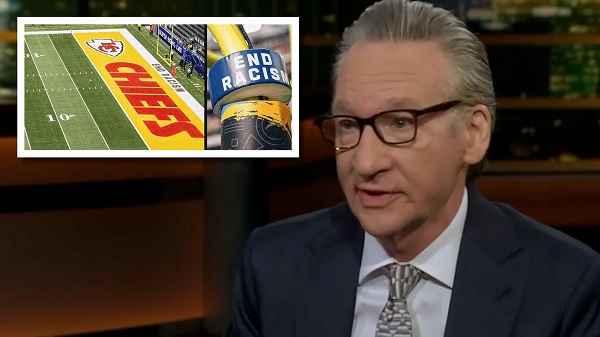
“Who is it for? And if you’re a racist and you see ‘End Racism’ in the end zone, you’re gonna stop being a racist?”
Comedian and political commentator Bill Maher just unleashed three brutal truth bombs on the Democratic Party in his latest episode of Real Time.
Despite his frequent bursts of Trump Derangement, Maher didn’t hold back on his party’s flaws.
The first truth bomb dropped when Maher told MSNBC’s Chris Hayes that the Democratic Party’s problem this election cycle wasn’t getting its message out—it was the message itself.
“This Ken Martin guy, he said something I’ve heard Democrats say a lot. ‘We didn’t get our message out.’ Maybe I’m paraphrasing, but that’s it. And I’ve said this before to Democrats. No, you did. That’s the problem. Yeah, you did get your message out, and people don’t like the message,” Maher said.
Join 100K+ Substack readers and 1.5 million 𝕏 users who follow the work of Vigilant Fox. Subscribe to Vigilant News for exclusive stories you won’t find anywhere else.
Maher also conceded that Trump is probably RIGHT about scrapping the Department of Education, taking notice that “It’s not like the kids are getting smarter.”
“Now, I don’t know that much about it, but I’ve never read good things. Rahm Emanuel, who I agree with on almost everything here, had a quote. He said: ‘A third of eighth graders can’t read, and now he wants to close the department?’ And I thought, that’s probably why they can’t read, or at least partly.”
“I mean, the numbers keep getting worse and worse and worse. And I don’t know if the Department of Education… I don’t know what it does except take money. It’s sort of a middleman,” Maher explained.
Congressman Byron Donalds (R-Florida) added, “When the Department of Ed was created in 1977, our reading scores and math scores for kids in 4th and 8th grade were higher than they are today.”
Maher then cited a stunning fact from a Nellie Bowles column, revealing that in Michigan, one teachers’ union contract states a teacher cannot be fired for being caught drunk on the job until it happens a fifth time.
“Yeah, the first four times, you’re good,” Maher responded with disgust.
He added, “Also, if you’re caught selling drugs twice, that’s when we fire you.”
“The first time, you’re good,” Maher quipped, shaking his head. “It is insane.”
The moment of the night dropped when Maher stunned Puck News reporter Tara Palmeri, telling her the “End Racism” messages in NFL end zones, which are being removed for the Super Bowl, do nothing to end racism.
Palmeri, caught off guard, scrambled for a coherent counterargument, but it fell flat when Maher delivered a reality check on what the “End Racism” message actually accomplishes.
MAHER: “I noticed that at the Super Bowl, they’re, for the first time in, I think, four years now, the Trump administration is making them take away ‘End Racism,’ which they had written in the end zone.”
TARA PALMERI: “But why? It just seems silly.”
MAHER: “To do it or not to do it?”
TARA PALMERI: “Why get rid of it?”
MAHER: “Oh, I could tell you why. Because it was stupid to begin with. But let me ask you, who is it for? And if you’re a racist and you see ‘End Racism’ in the end zone, you’re gonna stop being a racist?”
TARA PALMERI: (Stunned) “But the sentiment is basically like, don’t be an asshole.”
MAHER: “But I think it’s an asshole to nag us during a football game about something that doesn’t change anything. If I’m not a racist and I see it, it doesn’t matter. And if I am a racist, it’s gonna make me more of a racist.”
BYRON DONALDS: “Look, I think if you write ‘Don’t be an asshole’ in the end zone, everybody will agree with that.”
(Round of Applause)
This moment shattered the Democratic Party’s playbook of turning everything into a race or gender issue to claim the moral high ground.
But Maher tore it apart, exposing the ugly truth: Virtue signaling doesn’t “end racism.” If anything, it makes things worse.
𝕏 user Jordan M. Thomas said it best: “Virtue signaling doesn’t end racism; it perpetuates it.”
Few statements ring truer than that.
Thanks for reading! If you enjoyed this post, please do me a quick favor and follow me (@VigilantFox) for more reports like this one.
Business
Canada Can Finally Profit From LNG If Ottawa Stops Dragging Its Feet

From the Frontier Centre for Public Policy
By Ian Madsen
Canada’s growing LNG exports are opening global markets and reducing dependence on U.S. prices, if Ottawa allows the pipelines and export facilities needed to reach those markets
Canada’s LNG advantage is clear, but federal bottlenecks still risk turning a rare opening into another missed opportunity
Canada is finally in a position to profit from global LNG demand. But that opportunity will slip away unless Ottawa supports the pipelines and export capacity needed to reach those markets.
Most major LNG and pipeline projects still need federal impact assessments and approvals, which means Ottawa can delay or block them even when provincial and Indigenous governments are onside. Several major projects are already moving ahead, which makes Ottawa’s role even more important.
The Ksi Lisims floating liquefaction and export facility near Prince Rupert, British Columbia, along with the LNG Canada terminal at Kitimat, B.C., Cedar LNG and a likely expansion of LNG Canada, are all increasing Canada’s export capacity. For the first time, Canada will be able to sell natural gas to overseas buyers instead of relying solely on the U.S. market and its lower prices.
These projects give the northeast B.C. and northwest Alberta Montney region a long-needed outlet for its natural gas. Horizontal drilling and hydraulic fracturing made it possible to tap these reserves at scale. Until 2025, producers had no choice but to sell into the saturated U.S. market at whatever price American buyers offered. Gaining access to world markets marks one of the most significant changes for an industry long tied to U.S. pricing.
According to an International Gas Union report, “Global liquefied natural gas (LNG) trade grew by 2.4 per cent in 2024 to 411.24 million tonnes, connecting 22 exporting markets with 48 importing markets.” LNG still represents a small share of global natural gas production, but it opens the door to buyers willing to pay more than U.S. markets.
LNG Canada is expected to export a meaningful share of Canada’s natural gas when fully operational. Statistics Canada reports that Canada already contributes to global LNG exports, and that contribution is poised to rise as new facilities come online.
Higher returns have encouraged more development in the Montney region, which produces more than half of Canada’s natural gas. A growing share now goes directly to LNG Canada.
Canadian LNG projects have lower estimated break-even costs than several U.S. or Mexican facilities. That gives Canada a cost advantage in Asia, where LNG demand continues to grow.
Asian LNG prices are higher because major buyers such as Japan and South Korea lack domestic natural gas and rely heavily on imports tied to global price benchmarks. In June 2025, LNG in East Asia sold well above Canadian break-even levels. This price difference, combined with Canada’s competitive costs, gives exporters strong margins compared with sales into North American markets.
The International Energy Agency expects global LNG exports to rise significantly by 2030 as Europe replaces Russian pipeline gas and Asian economies increase their LNG use. Canada is entering the global market at the right time, which strengthens the case for expanding LNG capacity.
As Canadian and U.S. LNG exports grow, North American supply will tighten and local prices will rise. Higher domestic prices will raise revenues and shrink the discount that drains billions from Canada’s economy.
Canada loses more than $20 billion a year because of an estimated $20-per-barrel discount on oil and about $2 per gigajoule on natural gas, according to the Frontier Centre for Public Policy’s energy discount tracker. Those losses appear directly in public budgets. Higher natural gas revenues help fund provincial services, health care, infrastructure and Indigenous revenue-sharing agreements that rely on resource income.
Canada is already seeing early gains from selling more natural gas into global markets. Government support for more pipelines and LNG export capacity would build on those gains and lift GDP and incomes. Ottawa’s job is straightforward. Let the industry reach the markets willing to pay.
Ian Madsen is a senior policy analyst at the Frontier Centre for Public Policy.
Crime
Inside the Fortified Sinaloa-Linked Compound Canada Still Can’t Seize After 12 Years of Legal War
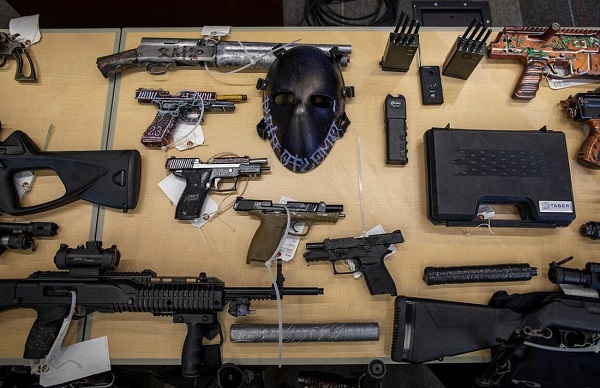
Exclusive analysis shows how a fortified Surrey mansion tied in court filings to the Sinaloa Cartel’s leader has become the core of a stalled civil forfeiture fight, exposing Canada’s weak laws.
A British Columbia government lawsuit seeks to merge almost a decade of litigation into a single, high-stakes test of whether the province can finally seize a fortified mansion near the U.S. border that was first swept up in a 2014 fentanyl investigation, raided in 2016, and is now at the center of a new synthetic-opioid case alleging its occupants contracted with the leader of Mexico’s Sinaloa Cartel to flood narcotics into Canada.
In a notice of application filed in November 2025, the Director of Civil Forfeiture argues that all of the files revolve around one owner — James Sydney Sclater — and his flagship property on 77th Avenue, a multi-million-dollar house about twenty minutes’ drive from the Peace Arch crossing.
The property became newly notorious this spring when the latest effort to seize it pulled back the curtain on a 2024 RCMP raid. Officers say they entered a mansion ringed by compound fencing, steel gates and razor wire, wired with Chinese-made Hikvision surveillance cameras and hardened doors.
Inside, they reported finding hidden compartments in bedrooms and a basement bathroom packed with counterfeit pills and kilograms of raw synthetic opioids — including fentanyl — while assault-style rifles with screw-on suppressors, thousands of bullets and other firearms and body armour were stored in ways that suggested the residents were prepared for urban warfare. Investigators later alleged the targets had “connections to virtually every criminal gang in British Columbia.”
They also seized travel documents, including Mexican visas, before tracing the operation to alleged negotiations with Ismael “El Mayo” Zambada García, the reputed head of the Sinaloa Cartel, which Ottawa has now listed as a terrorist entity.
But for Canadian anti-mafia units, the address tracks the history of fentanyl’s deadly sweep across British Columbia, among the hardest-hit opioid death zones in North America. Their interest in the Surrey mansion stretches back to the first wave of lethal fentanyl trafficking that surged from Vancouver’s Downtown Eastside to Victoria and Vancouver Island around 2013 — making this single property a through-line in the North American opioid crisis, one that now runs through senior offices in Washington, Mexico City, Beijing and Ottawa.
Behind the hundreds of pages of civil filings reviewed by The Bureau lies a failure of governance as urgent as the unchecked advance of Latin cartels into Canadian cities — and as lethal as the synthetic opioids tied to the Surrey home.
British Columbia has been chasing the same house, and the same alleged transnational traffickers, through raids, affidavits and Charter of Rights battles since before fentanyl became a household word — and still has not managed to take the keys away.
The case documents explicitly point to a criminal-defence-friendly Supreme Court of Canada ruling — Stinchcombe, notoriously cited by police leaders — and to its role in undermining numerous major prosecutions involving networks tied to alleged narcoterror suspect Ryan Wedding and modern Canadian fentanyl-lab operators. One of those networks is the Wolfpack, a hybrid of Mexican cartels, Middle Eastern threat networks and biker gangs said to be supplied by Chinese Communist Party–linked criminal organizations and other Latin American cartel interests.
For the Director, the newest chapter begins in earnest with an RCMP raid on September 23, 2024. By then, investigators say, the Surrey mansion was no longer a domestic drug base, but the Canadian end of a supply line reaching into Sinaloa itself. Notably, 38 days later, on October 31, the RCMP announced a separate raid on what U.S. sources describe as the largest fentanyl lab ever discovered in the world, in rugged Falkland, B.C., roughly halfway between Vancouver and Calgary.
“The combined fentanyl and precursors seized at this facility could have amounted to over 95,500,000 potentially lethal doses of fentanyl, which have been prevented from entering our communities, or exported abroad,” the Mounties said.
But Sinaloa does not appear out of nowhere in the Surrey compound. The older case that the Director now wants consolidated onto the same track reaches back to a different phase of the crisis — and sketches an earlier incarnation of the Surrey house as a node in a Lower Mainland fentanyl network.
According to a 2019 notice of civil claim filed in the Victoria registry, the RCMP’s Project E-Probang began in November 2014, targeting a chemical narcotics distribution network that operated across the Lower Mainland and Vancouver Island. At the centre of that probe, police say, was Nicholas Lucier and his associates. The Director alleges that Sclater supplied Lucier’s network with controlled substances, while his father-in-law Gary Van Buuren lived with him at the 77th Avenue property and “assisted him in trafficking of controlled substances.”
The narrative that follows reads like a blueprint for mid-2010s fentanyl tradecraft. In October 2016, Lucier associate Yevgeniy Nagornyy-Kryvonos allegedly drove to the Surrey mansion to receive fentanyl from Sclater. Two days later, Nagornyy-Kryvonos met Daemon Gariepy; Gariepy was arrested shortly after that meeting, with one kilogram of fentanyl in his possession. On November 6, 2016, Sclater and Van Buuren visited the Surrey home of another associate, Azam Abdul. Van Buuren was picked up soon afterwards, allegedly carrying a kilogram of methamphetamine, a kilogram of fentanyl and two cellphones.
That same day, RCMP officers moved in on 16767 77th Avenue with a warrant. Inside, according to the pleadings, they found the kind of infrastructure that exists to supply major drug lines: long guns and improvised weapons scattered through the house, from conventional shotguns and rifles to a deactivated grenade, brass knuckles and a small armoury of knives, batons and throwing stars. There was a money counter parked near vacuum-sealing equipment; shelves of drug-packaging and currency-bundling materials; a body armour vest; and a banknote stash of roughly $20,000 in twenties, bundled with elastic bands and tucked into vacuum-sealed bags.
Fentanyl-containing pills and scoresheets documenting transactions sat alongside a multi-monitor surveillance system and a wiretap-detection kit. In a separate corner, tax records in Sclater’s name showed his declared income stepping down from more than $77,000 in 2010 to just over $11,000 by 2014 — data points that undermined his ability to carry mortgages on two Surrey properties.
The days that followed widened the picture.
A search at Abdul’s residence turned up scales, fentanyl and the tools of drug production and processing. Raids at Lucier’s home and two rentals he allegedly used produced what the Director describes as a haul worth a serious cartel’s attention: weapons and ammunition, more than $2-million in cash, and “thousands of grams” of fentanyl, cocaine, methamphetamine, a heroin-fentanyl mixture, fentanyl “oxy” tablets and MDMA, along with the scoresheets and processing gear that underpin a wholesale operation.
On Vancouver Island, an arrest search of Lucier allegedly produced tens of thousands of dollars in cash and multiple phones.
Lucier had been on Canadian police radar since at least the mid-2000s, and his story intertwines with the murder of B.C. cocaine broker Tom Gisby in Mexico — a killing that, according to a Canadian police source interviewed by The Bureau, formed part of a bloody consolidation of Mexican cartel power over Vancouver’s drug markets.
Lucier’s notoriety stretches back to October 2009, when Victoria police announced what they described as the city’s largest-ever cocaine bust. After a three-month undercover probe triggered by a shooting near Beacon Hill Park, nearly 100 officers carried out pre-dawn raids on five locations around the capital region, seizing roughly 22.5 kilograms of cocaine, four high-powered handguns, two vehicles and about $420,000 in cash. Lucier, then 41 and already on parole from a 2007 trafficking sentence involving multi-kilogram quantities of cocaine and heroin, was the lone suspect to slip away; a Canada-wide warrant was issued for his arrest.
In 2012, police in Mexico’s Nayarit state announced they had arrested Lucier in the Pacific resort city of Nuevo Vallarta on the outstanding Canadian warrant — the same town where Gisby, a longtime player in British Columbia’s cocaine trade, had been shot dead days earlier while ordering coffee at a Starbucks. Mexican authorities said Lucier had been living under an assumed name and socializing with other Canadian expatriates in the Puerto Vallarta area, including people who knew Gisby, although his arrest was not believed to be directly tied to the murder.
For investigators, the episode underscored how Canadian traffickers were deeply embedded in Mexican resort corridors from Mazatlán to Cancún that doubled as hubs for cartel-linked players from the north. In the years that followed, it would be former Canadian snowboarder Ryan Wedding — tightly associated with the Wolfpack networks tied to Western Canada’s fentanyl superlabs — who, according to U.S. government sources, rose above other Canadian narcos in those resort towns to become perhaps the single conduit for Latin American–supplied narcotics imported into Canada for both domestic consumption and onward transshipment.
The Bureau is a reader-supported publication.
To receive new posts and support my work, consider becoming a free or paid subscriber.
No Charges on Fentanyl Network
E-Probang era investigations underpin the 2019 civil claim that seeks forfeiture of both the 77th Avenue mansion and a second property at 15797 92nd Avenue. The Director’s position is that the homes were purchased and maintained with money that cannot be reconciled with Sclater’s reported earnings and should be treated as the proceeds of crime.
According to an amended notice of civil claim filed in May 2025, Sclater shared the 77th Avenue house with Hector Armando Chavez-Anchondo and John Brian Whalen, while Whalen’s father, John Edwin Whalen, and Brittany Anne Horvey are drawn into the case through their alleged roles in what the Director calls a drug trafficking organization, or DTO. The court filings describe not a loose circle of dealers, but a structured group that trafficked ketamine, methamphetamine, counterfeit Xanax, oxycodone, MDMA and fentanyl, and that “since June 2021 at the latest” had been working to import bulk cocaine from Mexico.
As the Director tells it, those efforts led straight to Sinaloa itself. The Surrey group is alleged to have agreed to purchase cocaine from senior cartel suppliers — operating at such scale, sophistication and power within Canada that they ultimately negotiated directly with alleged cartel boss Ismael “El Mayo” Zambada García.
When U.S. authorities arrested El Mayo on July 25, 2024, the Surrey operation is said to have lurched sideways, searching for “other parties” to keep the cocaine pipeline alive. In early September, Sclater, Chavez-Anchondo and Whalen Jr. allegedly pooled money to secure a shipment, then drove out to a rendezvous where they expected to collect their imported cocaine. According to the filings, their transport contact never materialized, and they returned to Surrey empty-handed.
Eleven days later, the RCMP arrived with a search warrant. Inside the mansion, officers reported walking into what looked more like a mid-level cartel outpost than a suburban home: firearms racked and stashed in multiple rooms, including assault-style rifles with screw-on suppressors and piles of ammunition, suggesting residents lived with the expectation of raids or perhaps clashes with some of the six other Mexican cartel networks aside from Sinaloa that have been identified in Canada by federal police.
Hidden compartments had been carved into bedrooms and a basement bathroom, where police say they found kilogram-scale quantities of ketamine and methamphetamine, counterfeit alprazolam tablets pressed to resemble Xanax, hundreds of oxycodone pills, a smaller but potent stash of fentanyl, and bundles of Canadian cash tucked away in a manner seasoned investigators instantly recognized — elastic-bound bricks, some vacuum-sealed, packed tightly enough to hint at far more money moving through the house than Sclater’s tax returns would ever show.
Downstairs, a kitchen freezer allegedly doubled as a storage vault for nearly a kilogram of MDMA; elsewhere, RCMP catalogued an Azure pleasure boat, a stable of trucks and custom motorcycles, gold jewellery and two Hikvision digital-video recorders that formed the core of a security system surveying the compound. The Director’s case is that neither Sclater nor his co-defendants had legitimate income capable of supporting that lifestyle, and that the house was both the proceeds and instrument of unlawful activity.
The timing was not incidental. Ottawa formally listed the Sinaloa Cartel as a terrorist entity on February 20, 2025, as one of seven Latin American criminal organizations added to Canada’s Criminal Code list in response to the fentanyl crisis and mounting U.S. pressure.
The Director’s pleadings lean into that backdrop, explicitly calling Sinaloa a terrorist entity and portraying 16767 77th Avenue as part of the infrastructure of a cartel now placed at the centre of a transnational security crisis.
While the alleged facts of police raids against the Surrey mansion seem to move steadily, the apparent lack of criminal charges against any of the targets — let alone a racketeering-style case against the network itself, which is effectively impossible to mount in Canada, where there is no U.S.-style RICO statute — reveals a litigation record that can fairly be described as broken and ineffectual, except from the perspective of criminal-defence lawyers and their clients.
The Director’s Victoria-based action was filed on May 22, 2019.
Sclater responded months later, disputing the forfeiture. In December 2019, the province produced its list of documents. Sclater replied in January 2020 with a list that named no documents at all. Over the next two years, Crown counsel sent a steady stream of letters — in March 2020, August 2021, and repeatedly between October 2021 and March 2022 — demanding a proper list and the financial and property records that would show how Sclater funded his holdings.
In a 2022 application, the Director’s frustration spilled onto the record. The submission notes that under the Civil Forfeiture Act, the core question is whether the Surrey properties are proceeds or instruments of unlawful activity — and that without basic financial disclosure, there is no way to test Sclater’s claim that they were acquired lawfully. The Director points out that documents showing income sources, mortgage servicing, and the acquisition and storage of weapons “are critical to a determination of the action on its merits,” and accuses Sclater of refusing or neglecting, for almost three years, to meet even the baseline disclosure duties imposed by the civil-procedure rules.
To head off what it casts as an attempt to turn the case into a criminal-style disclosure standoff, the Director leans on British Columbia v. PacNet Services Ltd., where the court rejected defence arguments that tried to graft the Supreme Court’s Stinchcombe-era criminal disclosure standards onto civil forfeiture proceedings. R. v. Stinchcombe — the 1991 Supreme Court of Canada decision that imposed a broad duty on the Crown to disclose all potentially relevant information so an accused can make full answer and defence under section 7 of the Charter — is firmly rooted in criminal procedure. Echoing that line of authority, the Director argues that there is “no justification” for Sclater to shelter behind Stinchcombe to avoid producing his own financial and property records, and tells the court it is “time to move [the case] forward,” with full document production or a lawful explanation for the default.
The Bureau is a reader-supported publication.
To receive new posts and support my work, consider becoming a free or paid subscriber.
Constitutional Test
The newer Sinaloa-linked file adds another layer of complexity. Four of the five named defendants — Chavez-Anchondo, the two Whalens and Horvey — have not filed responses. In a separate notice of application, the Director now asks the court to treat the core allegations against them as admitted by default: that they were members of a drug trafficking organization; that they used or threatened violence; that they trafficked a catalogue of synthetic drugs and opioids; that they negotiated with Sinaloa; and that the weapons, cash and assets found in the 2024 raid are instruments and proceeds of crime.
For his part, Sclater is trying to turn the Surrey files into a constitutional test case. In his latest defence, he claims a lawful ownership interest in the 77th Avenue property, certain vehicles, cash, jewellery and electronic devices, and denies every allegation that he joined a criminal organization, conspired to import cocaine from Mexico, or negotiated with El Mayo. He acknowledges having a criminal record but disputes the particulars, and insists he had sufficient legitimate income to fund his properties and toys.
More ambitiously, he argues that the Civil Forfeiture Act itself is unconstitutional. By using allegations that he failed to declare taxable income as part of the proceeds-of-crime theory, he says, the province is encroaching on the federal government’s exclusive power over taxation under the Constitution Act, 1867. Assessing taxes owed, he points out, is the business of the Minister of National Revenue and the Tax Court of Canada. Civil forfeiture, in his view, cannot be used as a kind of shadow tax audit. He also asserts that the case “has arisen solely” from breaches of his Charter rights by RCMP officers and other state actors, arguing that the Director — “also an agent of the state” — is improperly relying on those breaches in seeking forfeiture.
It is, in effect, a bid to turn a forfeiture trial about a Surrey mansion into a referendum on how far provincial authorities can go in dismantling alleged drug networks without turning civil litigation into a criminal prosecution by another name.
All of this is unfolding against a national and continental backdrop that makes the Surrey house look less like an isolated problem than a symbol of a wider national failure.
Under National Fentanyl Sprint 2.0, Canadian police and partner agencies seized 386 kilograms of fentanyl and analogues between May 20 and October 31, 2025, with Ontario and British Columbia accounting for more than 90 per cent of that total. British Columbia reported 88 kilograms of seized fentanyl during the sprint. Yet those numbers miss some of the most alarming data points. Just days before the sprint window opened, Canada Border Services Agency officers at the Tsawwassen container facility in Delta intercepted more than 4,300 litres of chemicals from China, including 500 litres of propionyl chloride — a direct fentanyl precursor — and other substances capable of feeding clandestine labs in the Canadian wilderness for years. That shipment was destined for Calgary, and conservative estimates suggest it could have yielded enough fentanyl for billions of potentially lethal doses.
The Carney government continues to insist that Canada is primarily an end market, not a major exporter, and CBSA officials emphasize that only “small, personal doses” of finished fentanyl are being found heading south.
Seen from that angle, the fight over one Surrey mansion and the man who owns it becomes more than a story of Mexican cartels embedding in British Columbia’s wealthy suburbs.
It is a test of whether Canada’s patchwork of civil forfeiture laws, criminal prosecutions and Charter-driven disclosure rules can keep pace with transnational networks that blend Chinese chemical suppliers, Mexican cartels and domestic labs into a single system. For now, many Canadian police experts acknowledge in private — and some senior leaders flag in cautious public statements — that this test is being failed, and failed egregiously.
The Bureau is a reader-supported publication.
To receive new posts and support my work, consider becoming a free or paid subscriber.
-
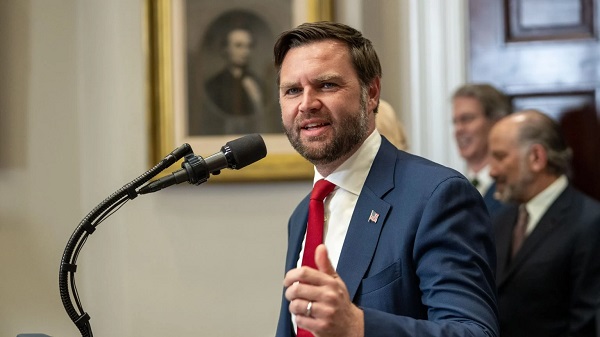
 Censorship Industrial Complex2 days ago
Censorship Industrial Complex2 days agoUS Condemns EU Censorship Pressure, Defends X
-

 Banks2 days ago
Banks2 days agoTo increase competition in Canadian banking, mandate and mindset of bank regulators must change
-

 Dan McTeague2 days ago
Dan McTeague2 days agoWill this deal actually build a pipeline in Canada?
-

 Opinion2 days ago
Opinion2 days agoThe day the ‘King of rock ‘n’ roll saved the Arizona memorial
-

 Focal Points2 days ago
Focal Points2 days agoCommon Vaccines Linked to 38-50% Increased Risk of Dementia and Alzheimer’s
-
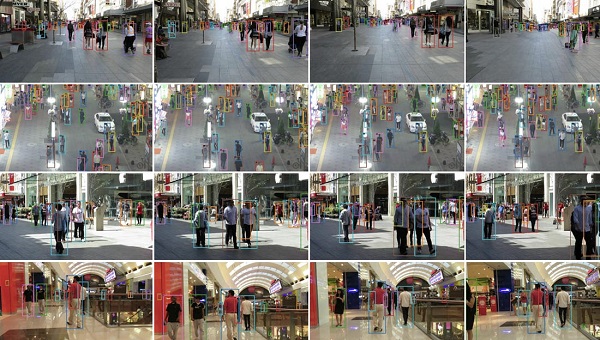
 espionage1 day ago
espionage1 day agoWestern Campuses Help Build China’s Digital Dragnet With U.S. Tax Funds, Study Warns
-

 Bruce Dowbiggin1 day ago
Bruce Dowbiggin1 day agoWayne Gretzky’s Terrible, Awful Week.. And Soccer/ Football.
-

 Business1 day ago
Business1 day agoThe EU Insists Its X Fine Isn’t About Censorship. Here’s Why It Is.

















